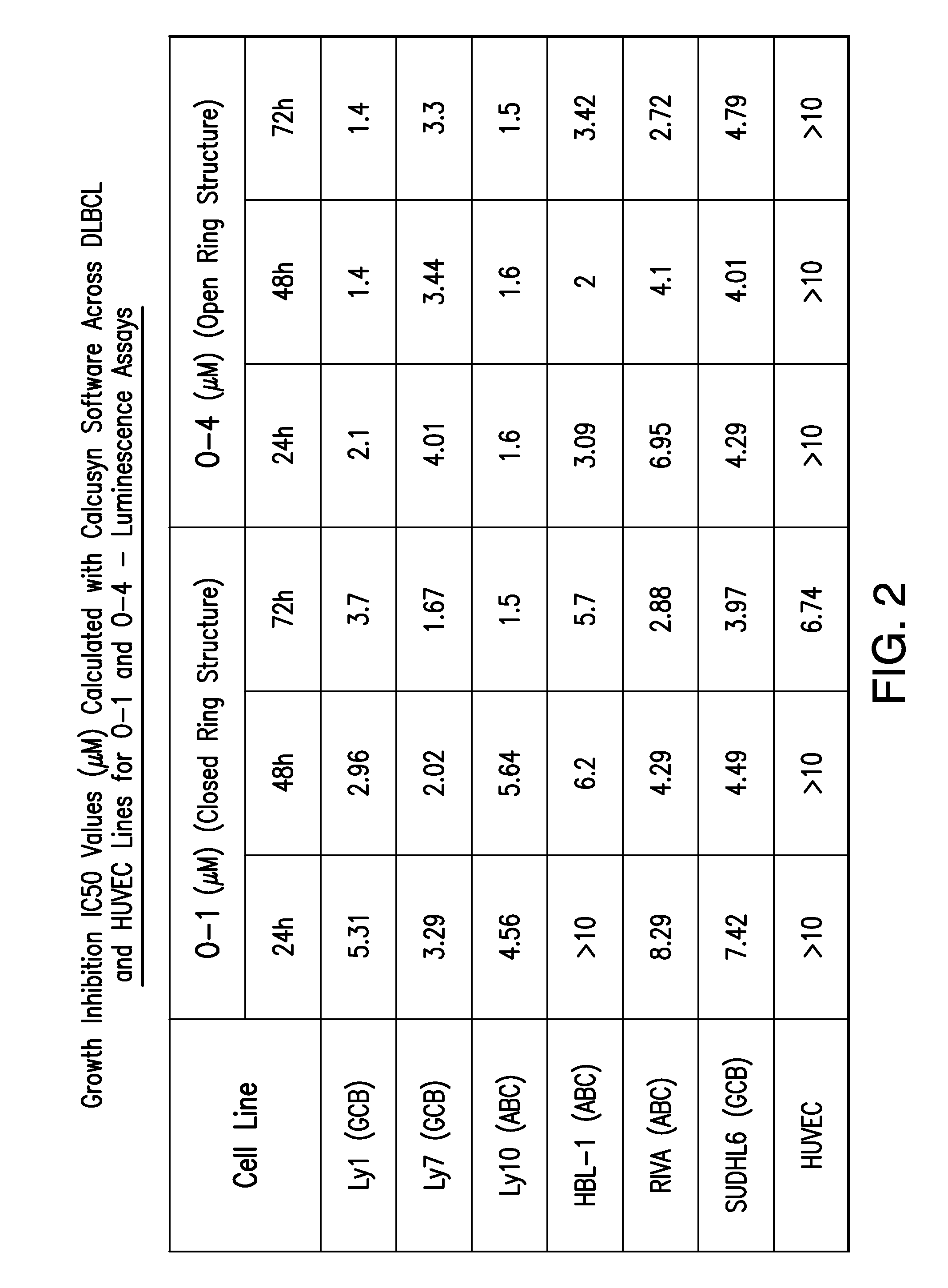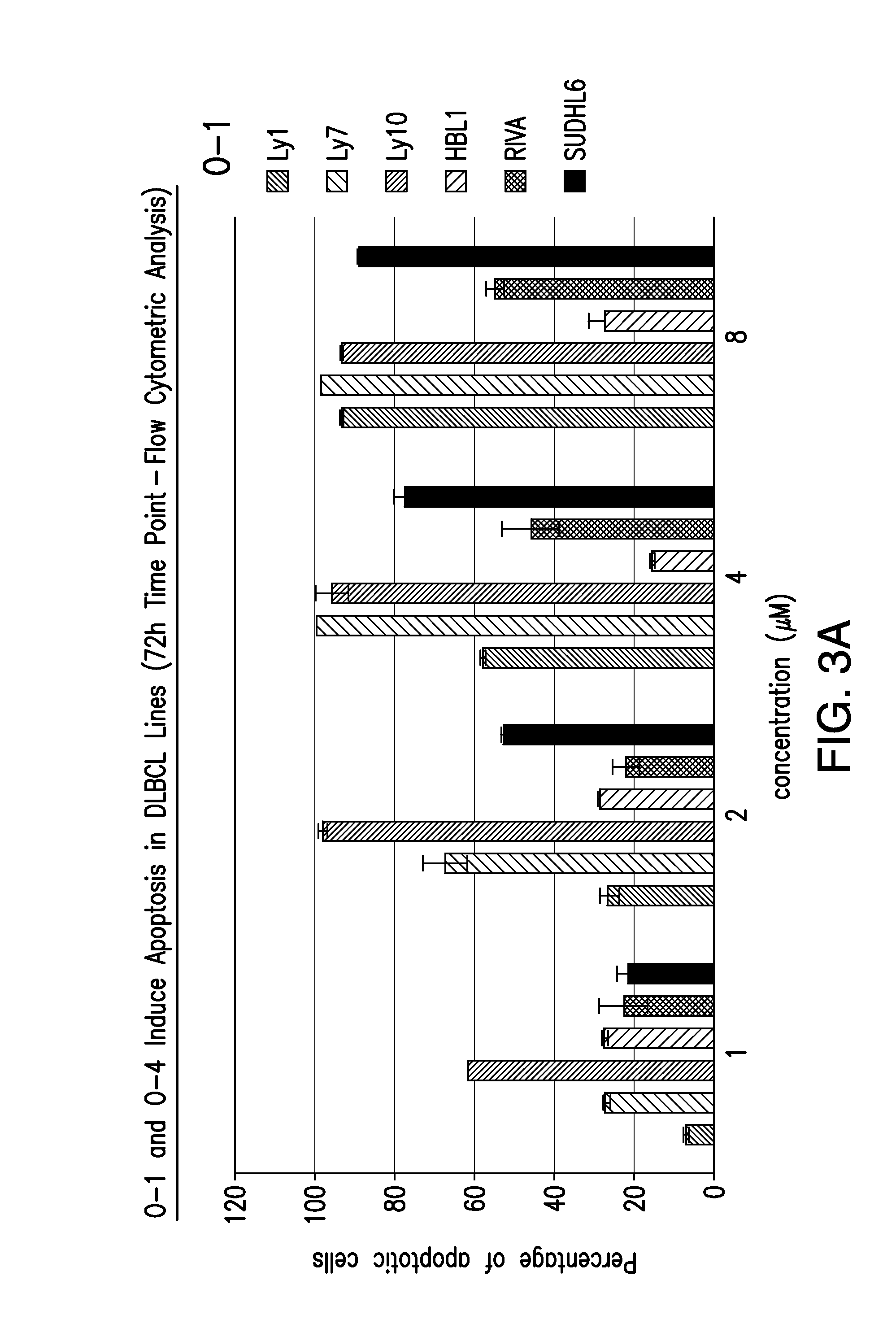N-quinolin-benzensulfonamides and related compounds for the treatment of cancer, autoimmune disorders and inflammation
- Summary
- Abstract
- Description
- Claims
- Application Information
AI Technical Summary
Benefits of technology
Problems solved by technology
Method used
Image
Examples
working example
6. WORKING EXAMPLE
[0083]Using a novel cell based assay, a unique scaffold structure of NQBS compounds has been identified having either the C7 locked or C7 open configuration (FIG. 1) that appears to selectively inhibit NF-κB mediated gene activation. In particular, a series of first, second and third generation compounds have been screened and found to exhibit the following properties.
[0084]Both C-7 closed and open configurations of compound were found to exhibit potent and reproducible concentration dependent cytotoxicity and induction of apoptosis in a panel of 12 highly drug resistant lymphoma cell lines (including B- and T-cell lymphomas), with low micromolar potency (FIGS. 2 and 3). The O-1 and O-4 (as well as O-2 and O-3) analogs were found to be highly potent in both GC and ABC DLBCL (O-5 was found to be inactive). While C7 open structures appeared to be more potent, there were minimal differences in the activities of these compounds. Cytotoxicity was not found to be signifi...
PUM
 Login to View More
Login to View More Abstract
Description
Claims
Application Information
 Login to View More
Login to View More - R&D
- Intellectual Property
- Life Sciences
- Materials
- Tech Scout
- Unparalleled Data Quality
- Higher Quality Content
- 60% Fewer Hallucinations
Browse by: Latest US Patents, China's latest patents, Technical Efficacy Thesaurus, Application Domain, Technology Topic, Popular Technical Reports.
© 2025 PatSnap. All rights reserved.Legal|Privacy policy|Modern Slavery Act Transparency Statement|Sitemap|About US| Contact US: help@patsnap.com



